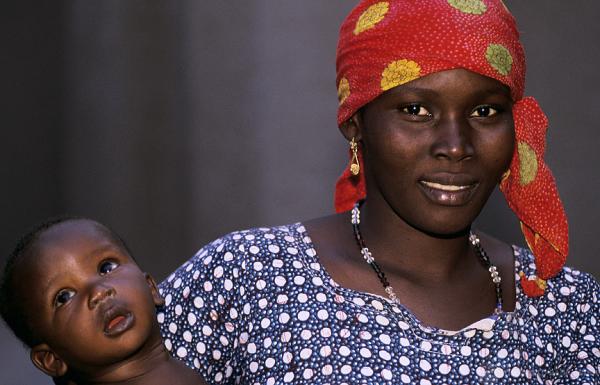
As we continue to dig deeper into the effects of climate change in our six main categories, it is important to take a moment to really reflect on todays category - gender. This is probably the only category that touches on the human aspect of climate change. From 10,000 feet up, we can all agree that climate change is indiscriminate in its effect on humanity. Men and women play important societal roles - both as the cause and the solution to human actions that lead to climate change.
At closer inspection though, climate change skews heavily towards women as the most affected gender. One reason perhaps is that the poorest, developing regions on the planet are usually the ones most dependent on natural systems for survival. Earlier this week, we looked at agriculture, energy and forestry categories. Agriculture is still Africa's number one economic engine. Behind this agrarian economy are the subsistent farmers who plant just enough to feed their families and perhaps trade the excess.
In Africa, cultural practices often put women at the center of providing for family. This means that the survival of the family runs through a woman. She plants, collects firewood and water, cooks and is generally responsible for the well-being of the family unit. But what happens when the natural resources rural women are dependent on like predicable weather patterns for rain, cultivation and clean water are compromised?
The Guardian recently ran a piece with data from The World Disasters Report:
The World Disasters Report, published by the International Federation of Red Cross and Red Crescent Societies, says 178 million children under the age of five have stunted growth as a result of a lack of food.
The annual report, which this year focuses on hunger and malnutrition, says the rise in basic food prices, the impact of changing climate and an increasing population have pushed the number of people who are undernourished to at least 1 billion. Of these, around 60% are women. When food is scarce it is often women who receive less or give their share to their children.
IPS News, a C4C knowledge partner recently covered a story on women dealing with climate change in Ghana:
As streams dry out, groundwater levels dwindle, and forests and other vegetation yield to droughts or severe storms, women who live their lives in the rural areas of Ghana have to spend more time and energy finding water and food for their families.
For these women, climate change means more hard work just to survive.
Minister for Women and Children's Affairs Juliana Azumah Mensah shares the same opinion.
"It is an undisputed fact that women constitute a large number of the poor in communities that are highly dependent on local natural resources for their livelihoods."
But we shouldn't look at climate change as something that simply victimizes women. It also empowers women to be agents of change within their communities. Wangari Maathai dedicated most of her life to environmental activism. She showed how powerful one womans life can be. Africa's young women are rising up in her foot steps and taking on environmental challenges in their communities, countries and the continent. Esther Agbarakwe, a young Nigerian mobilizing youth in her country and on the continent to participate in the climate change solutions, is just one of many who are strong climate change advocates in their communities. Esther recently wrote this about the importance of mobilizing youth for climate change:
Engaging young people in actions to address climate change is a critical element to any nations strategy. Young people are also a key point of influence for other segments of society (e.g., families and communities). If citizens come to understand what the risks of climate change are and how they can play a role in reducing the impact of climate change, they can become an integral part of the solution. Youth are an important source of creativity, enthusiasm and drive for any actions to address climate change.
In the interest of a balanced discussion on gender, we of course can't rule out the role men play at the intersection of gender and climate change. Just as women are at the center of subsistent and small-holder farming, men are often at the helm of large-scale resource-intensive industries that task the environment. By its very nature, the existence of large-scale farming means that natural systems like forests and waterways were compromised in exchange for the economic well-being of a segment of society.
Male-dominated industries like cotton, tea, sugar and coffee also have to answer to climactic hiccups. Bad crop yields due to weather extremes can force entire industries (employing mostly men) to collapse, diminishing the economic benefit altogether. This forces men with families to again try live off the same compromised eco-system through agrarian survival that is heavily dependent on - you guessed it - women.
How, then, should the solutions to climate change be reached? If women impact the climate through their responsibilities as domestic providers and men impact the environment from the industry side, how do we draw up solutions that dont favor one over the other? Perhaps a good start to answering that question is an excerpt from this research paper from the World Bank from 2008, "Gender and climate change: mapping the linkages" that states:
At the same time, it is the vulnerable and marginalised who have the least capacity or opportunity to prepare for the impacts of a changing climate or to participate in negotiations on mitigation. As women constitute the largest percentage of the world's poorest people, they are most affected by these changes. Children and youth - especially girls - and elderly women, are often the most vulnerable.
We'd like to hear from you. What are some climate change solutions that address gender? How can both genders participate in solutions-driven discussions that benefit everyone? Sound off in the comments below.



